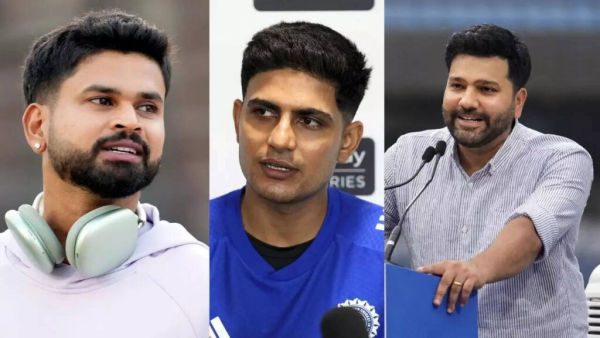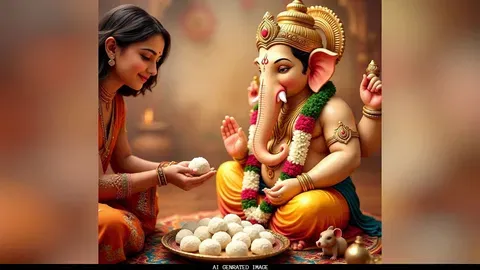

The Indian cricketing fraternity is abuzz with speculation over the future leadership of the national team, particularly in the ODI format. With the illustrious career of Rohit Sharma gradually approaching its twilight and several senior players retiring or transitioning from international cricket, the question of who will inherit the captaincy mantle has taken center stage. Amid swirling rumors, recent reports had pointed toward Shreyas Iyer as a potential candidate to replace Rohit as India’s ODI captain, highlighting his exemplary leadership in the IPL and consistent performances on the international stage. However, in a clarification that has refocused attention, the Board of Control for Cricket in India (BCCI) has firmly dismissed these speculations, asserting that no formal discussions have taken place regarding Iyer’s elevation. Meanwhile, senior officials within the BCCI have indicated that Shubman Gill, already a prominent figure in Indian cricket with a rapid ascent into leadership roles, remains the preferred choice to guide the team in the coming years.
Shreyas Iyer: IPL Hero and White-Ball Contender
Shreyas Iyer has captured the imagination of cricket enthusiasts across the country with his compelling blend of skill, temperament, and tactical acumen. In the last few years, Iyer has led two different Indian Premier League (IPL) franchises to consecutive final appearances, underscoring his ability to inspire teams under pressure and to make critical decisions in high-stakes matches. His calm demeanor, coupled with an aggressive approach to modern white-ball cricket, has drawn comparisons with some of India’s celebrated leaders of the past, positioning him as a natural contender for the captaincy of the national side. Analysts and fans alike have speculated that Iyer’s leadership in the IPL could translate seamlessly into the international arena, particularly in ODIs, where the balance of experience, aggression, and strategic insight is pivotal. These assumptions have been fueled by his consistent performances with the bat and his capacity to marshal younger players effectively, making him a figure around whom a new generation of Indian cricketers could coalesce.
Despite the hype, BCCI secretary Devajit Saikia’s explicit denial of any discussions regarding Iyer’s appointment has brought a dose of realism to the debate. In an exclusive statement to Hindustan Times, Saikia remarked, “That’s news to me. There have been no such discussions.” This clarification is significant not only because it counters the narrative of a predetermined succession plan but also because it highlights the BCCI’s intent to carefully weigh leadership decisions rather than succumbing to speculation driven by media reports or public perception. Iyer’s credentials remain impeccable, but the BCCI appears to be considering broader strategic and developmental factors before deciding on India’s next ODI captain.
The timing of this discourse is critical. Rohit Sharma, at age 38, has already stepped away from Test and T20I cricket, focusing on limited-overs formats where his experience and run-scoring ability remain invaluable. However, questions persist about how long he will continue to compete at the highest level, particularly as the 2027 ODI World Cup approaches. At that point, Rohit will be 40 years old, while younger talents such as Iyer would be approaching the prime of their careers, bringing a blend of maturity, energy, and decade-long international experience. The juxtaposition of Iyer’s rising trajectory with Rohit’s gradual wind-down has fueled public speculation, but the BCCI’s statements emphasize that leadership decisions are being approached with caution and deliberation.
Shubman Gill: The Frontrunner for Future ODI Leadership
While Iyer’s IPL exploits and batting credentials have captured headlines, Shubman Gill has quietly established himself as a compelling choice for the future captaincy of India’s ODI team. Gill’s journey has been characterized by a rapid rise through the ranks, combining consistency with adaptability, making him an ideal candidate to lead in the limited-overs format. Having cemented his place as India’s premier opening batter in ODIs, Gill has demonstrated exceptional temperament in high-pressure situations, particularly in World Cups and Champions Trophy matches, where his innings have often set the tone for India’s performances. Beyond his batting, Gill’s exposure to leadership roles in the IPL and the Indian Test team has provided him with valuable experience in managing team dynamics, understanding game strategies, and making decisive calls under pressure.
Several BCCI officials have indicated that Gill’s profile aligns well with India’s long-term strategy for ODI cricket. Unlike Iyer, whose leadership has been more prominently showcased in franchise cricket, Gill has gained hands-on experience in international contexts, working closely with senior players and contributing to team planning and execution. His ability to strike a balance between youthful energy and tactical intelligence is seen as a critical asset for India, especially as the team transitions toward a post-Rohit era. The endorsement of Gill as the preferred choice for the captaincy also reflects a broader trend within Indian cricket, where leadership grooming emphasizes continuity, team cohesion, and strategic foresight.
The decision-making process for appointing India’s next ODI captain is not merely about identifying an accomplished player but also about choosing a figure who can embody the team’s evolving identity. The last twelve months have seen wholesale changes in the national squad, with many veterans stepping aside to make room for fresh talent. These transitions have intensified the focus on leadership, as the captain will be tasked with nurturing young players, managing a multi-format schedule, and ensuring that India remains competitive on the global stage. In this context, Gill’s maturity, calm temperament, and prior exposure to leadership responsibilities make him a standout candidate, capable of steering the team through a period of generational change while maintaining high performance standards.
Although public and media speculation often gravitates toward headline-grabbing figures like Iyer, the BCCI’s approach appears to favor a more measured strategy. By publicly dismissing discussions about Iyer while signaling support for Gill, the board has clarified its stance, underscoring that leadership succession is a considered process. Analysts suggest that such an approach may also be intended to avoid internal distractions within the squad, allowing players to focus on performance rather than off-field conjecture. Furthermore, this approach ensures that the eventual captaincy appointment has legitimacy both within the team and among fans, providing a foundation of stability as India navigates an evolving cricketing landscape.
As the conversation continues around India’s ODI leadership, a few key considerations emerge. The next captain will need to balance individual brilliance with team cohesion, leverage experience while integrating younger talent, and maintain strategic flexibility to adapt to modern cricket’s rapid pace. Shubman Gill’s combination of technical skill, psychological resilience, and exposure to leadership roles positions him to meet these challenges effectively. Meanwhile, Shreyas Iyer’s rising stature ensures that he will remain an integral part of India’s cricketing setup, potentially taking on leadership responsibilities in the future, whether in white-ball cricket or within specific formats and tournaments.
The backdrop of this debate also reflects a larger narrative in Indian cricket: the careful nurturing of the next generation of leaders. Historically, India has sought captains who not only excel on the field but also command respect off it, balancing tactical ingenuity with personal charisma. Gill’s measured ascent aligns with this ethos, suggesting that the BCCI is mindful of both performance metrics and the intangible qualities that define effective leadership. Iyer’s trajectory, while impressive, highlights that multiple pathways exist for players to contribute significantly to the team’s success, even if not immediately assuming the captaincy mantle.
The discourse surrounding India’s ODI captaincy is emblematic of a broader transitional phase in national cricket. As the team adjusts to generational shifts, the BCCI is signaling that leadership decisions will be approached with deliberation, prioritizing both experience and strategic foresight. Shubman Gill’s emerging status as the front-runner for captaincy reflects a considered evaluation of performance, temperament, and potential for long-term impact, while Shreyas Iyer’s continued prominence underscores the depth of talent available to Indian cricket. This careful balancing act is central to ensuring that India remains competitive internationally while fostering a new generation of players equipped to lead with distinction.
The post BCCI clarifies ODI captaincy speculation: Shubman Gill emerges as first choice over Shreyas Iyer for Rohit’s successor | cliQ Latest appeared first on CliQ INDIA.
-
AP Dhillon’s “Thodi Si Daaru” splits fans between fun and cringe

-
Ganesh Chaturthi Special, Nariyal Ladoo Recipe: Offer Bappa special coconut laddus, know easy recipe here

-
Mom Asks What Would Be A Fair Weekly Allowance To Pay Her Daughter In College

-
Daily Tarot Horoscopes For Each Zodiac Sign On August 24, 2025

-
5 Of The Best New SUVs You Can Buy In 2025, According To KBB
